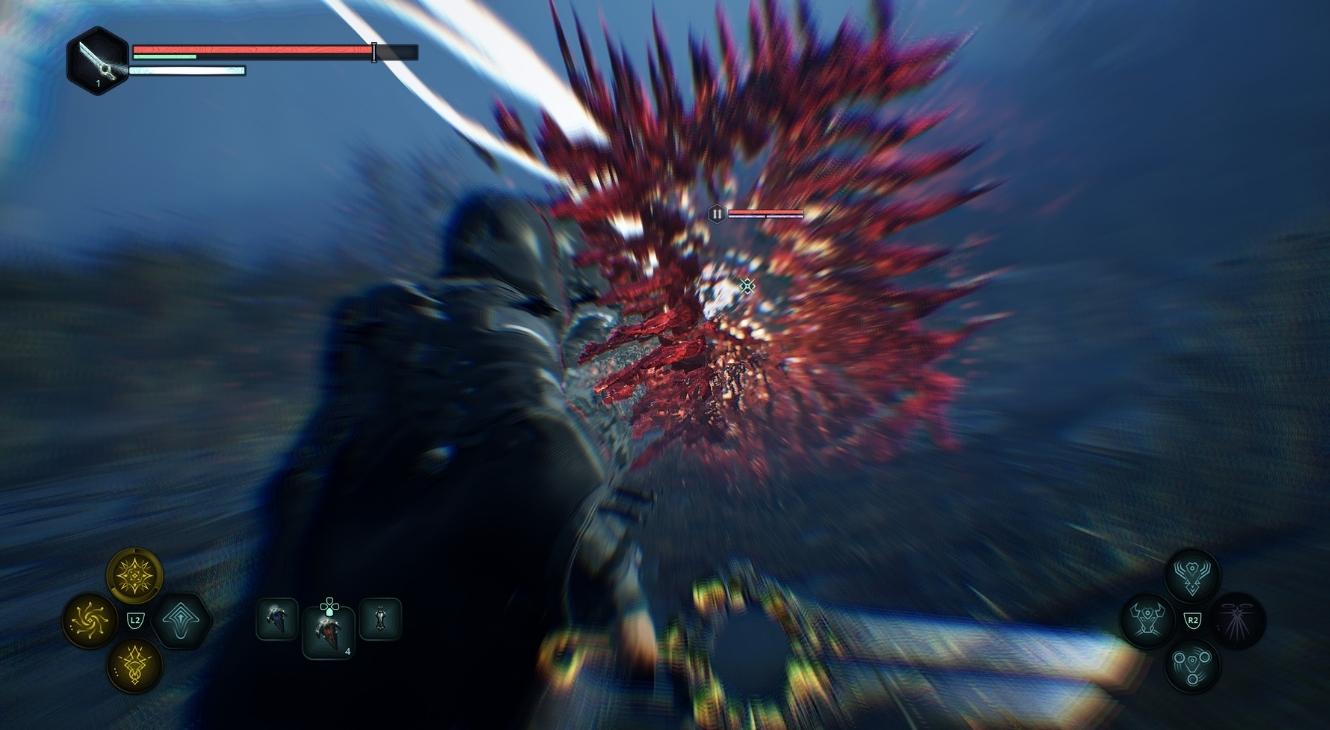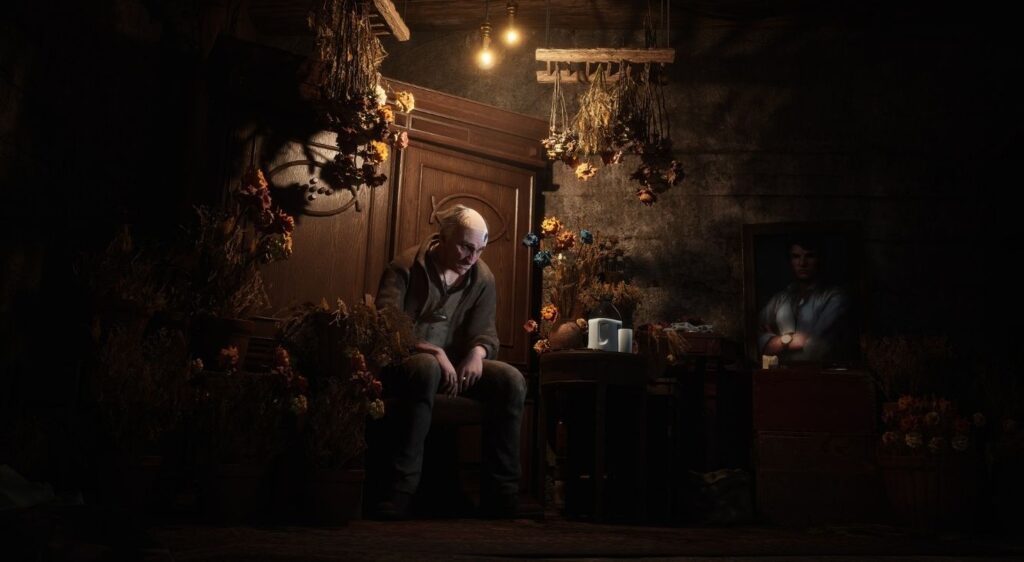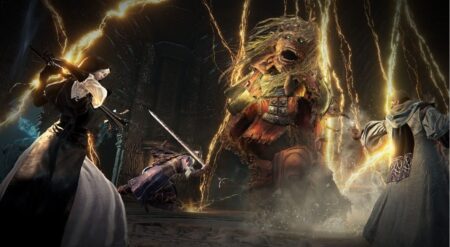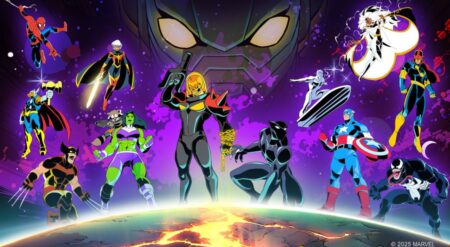Most modern games are terrified of letting you miss something. Tutorials flash. Objectives update. Icons flood your screen. But Hell is Us doesn’t just let you miss things, it dares you to. That refusal to over-explain, to flatten discovery, is what makes it one of the most radical and emotionally resonant games of 2025.
Developed by Rogue Factor and published by Nacon, Hell is Us immerses players in the scarred heart of Hadea, a fictional nation torn apart by decades of civil war, propaganda, and spiritual unrest. The year is 1993, but the country feels older, like time has stuttered under the weight of trauma. Buildings are weathered not just by conflict, but by grief. Statues crumble under forgotten ideology. Every corner of this world feels like a question mark etched into stone.
And then comes the Calamity. Entities called the Haze begin to manifest, pure emotion given form. Rage, terror, grief, and ecstasy crawl across the land, tethering themselves to human husks known as Hollow Walkers. These aren’t enemies in the traditional sense. They’re emotional echoes—violent, destabilizing reactions to things never fully mourned, understood, or accepted.
Hell is Us has no modern signposting for quest markers, mini-maps, or anything.

You play as Rémi, a man returning to Hadea to uncover his own family’s past and confront the psychic weight of a homeland unraveling at the seams. His military background gives him the tools to survive, but not the answers. Those, the game insists, you’ll have to earn yourself.
Everything in Hell is Us stems from one core design philosophy: player plattering. It’s a term that captures the absence of modern signposting. There are no quest markers, no mini-maps, no blinking prompts. You’re handed the ingredients, not the recipe. Success depends on how closely you pay attention and how willing you are to sit with uncertainty.
This makes Hell is Us a game built around questions. What does this symbol mean? Why is this NPC repeating a phrase? Where does this path lead when no map tells you it’s important? Whether through visual cues, sound design, or a passing comment, Hell is Us teaches players to observe before they act.
And because of that, it’s almost impossible to say how long the game will take to complete. One player may find a hidden dungeon early. Another might miss it entirely. Some may stumble into a time loop mechanic after hours of backtracking. Others may never discover it at all. But that’s the beauty of it. Community will be essential for some, while others will love the solo adventure.
Hell is Us wants you to slow down and pay attention to what’s going on to figure things out.

Every experience is defined by the player’s own choices, patience, and curiosity. In a world obsessed with efficiency and 100% completion rates, Hell Is Us reclaims the joy of not knowing. And in doing so, it revives the idea that discovery should feel earned, not guaranteed.
Hadea isn’t just a place; it’s a puzzle box built out of memory, war, and spiritual decay. Regions like the Senedra Forest and Areasa Marshes are more than combat zones; they’re landscapes of tension and grief. Shrines mark ancient rites that have been abandoned or misused. Burned-out vehicles sit half-swallowed by moss and mud. The terrain tells stories whether you’re ready to hear them or not.
Exploration isn’t about unlocking fast travel or clearing checklists. It’s about slowing down. Looking closely. Following your gut when the path splits. One dungeon may shift shape based on time and emotion. Another may only reveal its secrets if you retrace your steps hours later. This isn’t procedural design, but intentional, handcrafted mystery.
Optional zones, such as the Vault of Forbidden Knowledge or the looping structure of the Lymbic Forge, prove just how deep the design goes. These spaces challenge not just your skills, but your mindset. You’re asked to see the world through emotion, how architecture represents grief, how silence speaks louder than dialogue. The result is a game where getting lost isn’t a mistake: it’s a message.
Combat in Hell is Us is slow and deliberate.

Combat in Hell is Us is slow, deliberate, and purposefully uncomfortable. You’re not a superhero. You’re a man in search of answers, facing horrors that are as psychological as they are physical. Most enemies are Hollow Walkers, emotionally fractured humans whose bodies act out the trauma they can no longer contain.
But the real threat appears when they become tethered to a Haze: emotionally charged entities born from grief, rage, ecstasy, or terror. Each emotion changes how the enemy behaves. Rage charges without hesitation. Grief drags out the fight. Terror confuses and misdirects. Understanding these patterns, recognizing emotion as a gameplay mechanic, is essential to survival.
Your tools are also built around this emotional system. Weapons can be equipped with glyphs aligned to those core emotions, allowing for customization based on both enemy type and personal strategy. Parrying, dodging, and managing stamina are critical, but no single approach guarantees success. This is a game that demands awareness, not just reflex.
Helping you navigate that intensity is KAPI, a highly advanced drone companion that Rémi acquires early on. KAPI is more than a gimmick or something to sell merch. It acts as both a tactical and exploratory ally, capable of distracting enemies, lifting you into the air for aerial attacks, translating ancient engravings, or illuminating dark spaces. With up to four modules equipped at a time, KAPI adapts to your needs, whether you’re hunting down a secret path or surviving a chaotic multi-Haze encounter.
Hell is Us’ Haze creatures are emotions made monstrous.

For players who want to focus more on the story than the punishment, Hell is Us includes robust accessibility sliders for things like enemy health, damage output, and parry timing. These options don’t undercut the design. They reinforce the game’s commitment to personal experience. You can dial up the challenge or tone it down, but the emotional resonance remains intact.
Technically and artistically, Hell is Us is one of the most cohesive games of the year. Composer Stefan Bibeau’s score flows in and out based on proximity and mood, with silence often delivering the hardest hits. Sound design is surgical thanks to audio director Antonie Vachon: a wind chime in the distance, boots crunching over rubble, strings flaring as a Haze closes in. It’s all there to deepen the emotional texture. And when the words matter, so does who says them.
In addition to English, the game features a full French-language voice cast dub, grounding the world in a tone that feels lived-in and authentic. Performances are subtle. There’s no melodrama, just weariness, regret, and silence that lingers. Rémi’s voice never overreaches, but it carries weight. Even NPCs feel real: cracks in the voice, deliberate pacing, pauses that say more than words.
Visually, the game mirrors this restraint. Haze creatures are emotions made monstrous: geometry warped by grief or rage. Hadea feels like a place that forgot what it used to be, each ruin a scar. Even the haptic feedback responds to emotional proximity, stitching sight, sound, and feel into one immersive thread. Nothing here is set dressing.
Hell is Us harkens back to the old days of gaming when you had to talk to friends to learn secrets.

Everything tells a story in Hell is Us if you’re willing to look, listen, and feel. And everywhere you go, there’s a sense of intent. A shrine isn’t just flavor: it’s lore. A repeated melody isn’t just a motif: it’s a clue. Even controller vibration is tuned to sync with ambient sounds and environmental tension.
It’s rare for a game to feel this confident in its design. Rarer still for it to be this successful at executing it. Hell is Us trusts its players in ways most games don’t. Especially one with such a small team that does everything in-house. It believes that ambiguity can be beautiful. That pain can be instructive. That silence can say more than exposition ever could.
And maybe more importantly, it believes that every player should walk a different path. That some secrets will only be found when players start talking to each other, piecing things together long after the credits roll. Not because the game told them to. But because it meant something.
Hopefully, people don’t just come to Hell is Us for its combat or the pedigree of Jonathan Jacques-Belletête and Rogue Factor. Hopefully, they come to reflect. To think about what happens when we leave our emotions unchecked. When grief becomes policy. When rage becomes ritual. And when the things that connect us, the ability to feel deeply, are seen as liabilities instead of truths.
Hell is Us trusts you to listen, to feel, and to get lost.

In the end, Hell is Us strangely struck me. It reminded me of my earliest gaming experiences: alone in a room, no internet walkthroughs, no friend to call, just trying to figure out what a blinking light meant or why a boss behaved a certain way. Hell is Us captures that again. Only now, the stakes aren’t just mechanical, they’re emotional.
Because this isn’t a game about how strong you are, it’s about what you choose to carry. It’s about how you navigate uncertainty. And it’s about how easily we become Hollow Walkers ourselves when we ignore what we feel. Hell is Us isn’t just about monsters. It’s about what we become when we refuse to deal with the very things that make us human.
No maps. No markers. No mercy. Hell is Us trusts you to listen, to feel, and to get lost. And in doing so, it offers something truly rare: a soul.
Hell is Us launches on September 4 on PlayStation 5, Xbox Series X|S, and PC.
Hell is Us
-
Rating - 10/1010/10
TL;DR
No maps. No markers. No mercy. Hell is Us trusts you to listen, to feel, and to get lost. And in doing so, it offers something truly rare: a soul.








